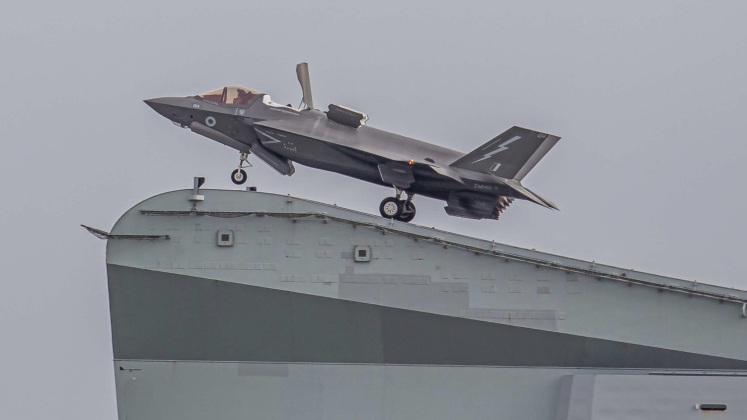A British F-35B single engine fighter crashed into the Mediterranean Sea on November 17th during operations from the Royal Navy aircraft carrier HMS Queen Elizabeth. The Ministry of Defence stated confirmed that a“British F-35 pilot from HMS Queen Elizabeth ejected during routine flying operations in the Mediterranean this morning,” stating that it “would be inappropriate to comment further at this time.” The F-35B is the most costly fighter in serial production anywhere in the world due to its vertical landing capabilities. These are needed to deploy from British carriers which lack the ability to accommodate conventional carrier based aircraft as French and American carriers can. As a result the fighter costs over 50 percent more than the conventional F-35A which is the most widely produced variant, and is considerably less capable with a smaller payload, lower range and much lower manoeuvrability which were design compromises to accommodate vertical landing. Britain recieved three U.S.-built F-35s earlier in November bringing its fleet to 24, with 13 more to be delivered by the end of 2023. While originally the country was set to field 138 of the aircraft, meeting even half this number today appears unlikely due to financial difficulties. The shortage has been compensated for by deploying U.S. Marine F-35Bs from the HMS Queen Elizabeth, with just eight British F-35s on board when the ship embarked on a seven month maiden voyage supported by 10 American F-35s.

It is expected that efforts will already be underway to recover the F-35, as if lost to adversaries the aircraft would provide a valuable subject for study. Russia notably has a large presence in the Mediterranean and deploys specialised recovery equipment to pull equipment from the sea floor. Russia itself undertook extensive recovery efforts for its Navy’s MiG-29K and Su-33 fighters after they fell into the Mediterranean in 2016, primarily to prevent their electronics equipment from falling into NATO hands. The F-35, as part of a $1.6 billion weapons program which will form the backbone of NATO air fleets for decades to come, is significantly more sensitive still. Unlike Russian carrier based fighters, or previous carrier based American fighters, the F-35 has only a single engine which is seen to pose a greater risk of crashes. Many navies have long seen this risk as unacceptable for manned jets flying at sea, which was why the F-35’s predecessor the F-16 was rejected for use on U.S. Navy carriers.
